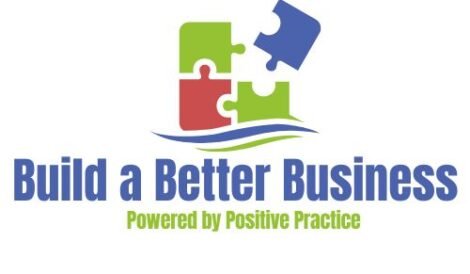A Complete System for Small Businesses, Consultants, and Professional Service Providers
Introduction
Most small businesses fail not because they lack talent, passion, or even good products and services. They fail because they lack a systematic approach to growth. The Results Mastery Six-Step Process addresses this by providing a clear, actionable roadmap that takes you from complete obscurity to consistent sales conversions.
This system is specifically designed for small businesses, consultants, advisors, coaches, accountants, and professional service firms who want to build sustainable growth through relationship-based marketing and sales.Here is the process and in-depth review:
Step 1 Overcoming Obscurity
The Problem
The biggest challenge facing small businesses today isn’t competition—it’s invisibility. You could have the best product or service in your market, but if nobody knows you exist, you have no business.
The Solution: Strategic Visibility
Overcoming obscurity requires intentional action across multiple channels:
Content Marketing:
- Start a blog addressing your target market’s biggest challenges
- Create valuable resources (guides, checklists, templates)
- Share insights on social media platforms where your audience congregates five plus times per day
- Guest post on industry publications and podcasts
- Form your own podcast
- Develop a list and target that list with phone calls, emails, SMS messages and WhatsApp
- Advertise on Google, Bing, Facebook, LinkedIn, youTube (not alla t once) build up you investment, as your business grows.
Local Presence:
- Join local, and regional business organisations and chambers of commerce
- Attend networking events consistently
- Speak at industry meetups and conferences and networking events
- Partner with complementary businesses for cross-referrals.
Digital Footprint:
- Optimise your website for local SEO
- Claim and optimise Google My Business listing
- Encourage satisfied clients to leave online reviews
- Maintain active profiles on relevant social platforms
- Host free reports, webinars, and write a book to give away on your website in exchange for someones contact details.
Strategic Partnerships:
- Build relationships with referral sources
- Create affiliate or partnership programs
- Collaborate with non-competing businesses serving the same market
Key Metrics to Track:
- Website traffic and search rankings
- Social media followers and engagement
- Speaking opportunities secured
- New connections made monthly
- The sise of your email list
- The number of people that you are connected to on LinkedIn, Facebook, X, Instagram
- The number of YouTube subscribers you have and the number of people who watch your videos.
Step 2: Consistent Communication
The Challenge
Getting noticed once isn’t enough. The average person needs 7-12 touchpoints before making a buying decision. Without consistent communication, you’ll remain a stranger.
Have you ever connected with someone on LinkedIn and then never heard from them again? I know you have, and I know it happens thousands of times every day.
The Solution: Systematic Outreach
Build a communication system that keeps you top-of-mind:
Email Marketing:
- Weekly newsletter with valuable insights
- Monthly industry updates and trends
- Quarterly case studies and success stories
- Automated welcome sequences for new subscribers
Content Calendar:
- Plan content themes by month/quarter
- Mix educational, inspirational, and promotional content (80/20 rule)
- Repurpose content across multiple channels
- Create seasonal and timely content
Social Media Strategy:
- Daily valuable posts on primary platforms
- Weekly live videos or stories
- Monthly deeper-dive content pieces
- Consistent engagement with followers’ content
Direct Outreach:
- Monthly check-in calls with key prospects
- Quarterly lunch meetings with referral sources
- Annual client appreciation events
- Birthday and anniversary acknowledgments
Communication Frameworks:
- AIDA: Attention, Interest, Desire, Action
- Value-First Approach: Always lead with what benefits them
- Story-Based Communication: Share client success stories and case studies
Step 3: Enabling your prospects and client to Know, Like, and Trust you, your business and your products and services
The Foundation
People buy from people, businesses and products and services that they know, like, and trust. This step transforms your consistent communication into relationship building.
Strategies for Building Trust:
Position yourself as a key person of influence.
Demonstrate Expertise:
- Share specific, actionable advice
- Provide free consultations or audits
- Write a book
- Speak at events
- Charge more
- Improve your brand
- Have a great website, Podcast, blog, YouTube channel, Social media channels, App
- Publish case studies with measurable results
- Have lots of testimonials and use them all over your marketing
- Offer guarantees or risk-reversal propositions
Show Personality:
- Share your business journey and challenges overcome
- Discuss your values and what drives you
- Be transparent about your process and methodology
- Admit mistakes and share lessons learned
Provide Social Proof:
- Client testimonials and video reviews
- Industry certifications and awards
- Media mentions and speaking engagements
- Association memberships and community involvement
Add Personal Touches:
- Remember personal details about prospects
- Send handwritten notes and cards
- Share relevant articles that made you think of them
- Celebrate their wins and milestones
Content That Builds Trust:
- Behind-the-scenes content
- Client success stories
- Industry insights and predictions
- Educational tutorials and how-to guides
- Personal stories that relate to business challenges
Step 4: Creating Two-Way Communication
The Transition
Moving from broadcasting to conversation is crucial. This step opens the door for prospects to engage directly with you.
Engagement Strategies:
Interactive Content:
- Polls and surveys on social media
- Q&A sessions and live streams
- Webinars with Q&A segments
- Hold events, networking events, webinars
- Interactive assessments and quizzes
Conversation Starters:
- Ask questions in your content
- Request feedback on ideas or approaches
- Invite responses to controversial (but professional) opinions
- Share challenges and ask for input
Response Systems:
- Prompt email replies with specific questions
- Social media engagement campaigns
- Comment sections on blog posts
- Direct message conversations
Value-Added Interactions:
- Free resource downloads that require email signup
- Mini-consultations or strategy sessions
- Industry surveys with shared results
- Collaborative content creation
Signs of Successful Two-Way Communication:
- Increased email replies and engagement
- More social media comments and shares
- Direct messages and phone calls initiated by prospects
- Referrals and introductions from your network
Step 5: Converting Goodwill into Meetings
The Critical Transition
All the goodwill in the world means nothing if you can’t convert it into face-to-face conversations. This step is about turning warm relationships into scheduled meetings.
Meeting Conversion Strategies:
The Soft Ask:
- “I’d love to hear more about your current challenges…”
- “Would you be open to a brief conversation about…”
- “I have some ideas that might help with what you mentioned…”
Value-First Meetings:
- Offer free consultations or audits
- Promise to share industry benchmarks
- Provide customized recommendations
- Share relevant case studies in person
Multiple Meeting Formats:
- In-person coffee meetings (highest conversion)
- Video calls via Zoom or similar platforms
- Phone consultations
- Virtual lunch meetings
Meeting Request Templates:
- Email scripts for different scenarios
- LinkedIn message templates
- Phone conversation frameworks
- Follow-up sequences for non-responses
Overcoming Meeting Objections:
– “I don’t have time” → Offer flexible scheduling and brief duration
– “I’m not ready” → Position as educational, not sales-focused
– “I need to think about it” → Provide more value and social proof
– “We’re happy with current provider” → Focus on optimisation and benchmarking
Step 6: Converting Meetings into Sales
The Final Step
This is where all your relationship-building pays off. Having a systematic approach to sales conversations ensures consistent results.
The Sales System:
Pre-Meeting Preparation:
- Research the prospect thoroughly
- Prepare relevant case studies
- Develop customized presentation materials
- Set clear meeting objectives
Meeting Structure:
1. Rapport Building (5-10 minutes)
2. Discovery Questions (20-30 minutes)
3. Presentation of Solutions (15-20 minutes)
4. Handling Objections (10-15 minutes)
5. Closing and Next Steps (5-10 minutes)
Discovery Question Framework:
- Current situation and challenges
- Impact of not solving the problem
- Previous attempts at solutions
- Decision-making process and timeline
- Budget parameters and investment criteria
Presentation Best Practices:
- Focus on outcomes, not features
- Use specific examples and case studies
- Address their stated challenges directly
- Provide clear next steps and timelines
Closing Techniques:
- Assumptive close: “When would you like to get started?”
- Alternative close: “Would you prefer Option A or Option B?”
- Urgency close: “We have an opening next month…”
- Trial close: “How does this sound so far?”
- Imagine close: “From what you’ve said, I’d imagine that you’d like to go ahead, wouldn’t you?
- Leading close: “Add the “Wouldn’t you, Don’t you, Shouldn’t you” to the end of a normal close
Follow-Up Systems:
- Same-day thank you and summary email
- Proposal delivery within 48 hours
- Structured follow-up sequence
- Multiple touchpoints across different channels
Key Performance Indicators (KPIs)
Track these metrics to measure success at each step:
1. Obscurity to Visibility: Website traffic, social followers, speaking opportunities
2. Communication Consistency: Email open rates, content engagement, touchpoint frequency
3. Trust Building: Testimonials received, referrals generated, repeat engagement
4. Two-Way Communication: Response rates, initiated conversations, engagement quality
5. Meeting Conversion: Meeting requests sent vs. accepted, conversion rate percentage
6. Sales Conversion: Meeting-to-sale conversion rate, average deal size, sales cycle length
Conclusion
The Results Mastery Six-Step Process provides a complete system for sustainable business growth. By following this methodology consistently, small businesses and professional service providers can build predictable revenue streams based on strong relationships and systematic processes.
Remember: This is not a quick-fix solution but a long-term strategy that builds compound results over time. The businesses that commit to this process and execute it consistently will see dramatic improvements in their growth trajectory within 6-12 months.
Success comes from consistent execution of each step, not from perfecting any single element. Start where you are, use what you have, and do what you can. The Results Mastery system will guide you from obscurity to sustainable success.
Want to find out more? Book a meeting with me Steve Mills.
Steve




